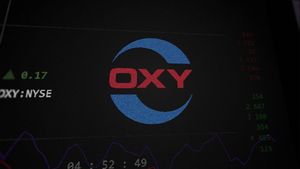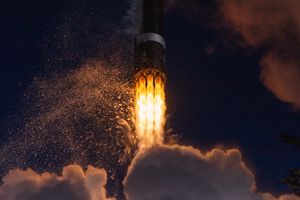
Extreme Ultraviolet (EUV) Lithography has emerged as the unequivocal cornerstone of modern semiconductor manufacturing, a foundational technology that is not merely advancing chip production but is, in fact, indispensable for creating the most sophisticated and powerful semiconductors driving today's and tomorrow's technological landscape. Its immediate significance lies in its unique ability to etch patterns with unparalleled precision, enabling the fabrication of chips with smaller, faster, and more energy-efficient transistors that are the very lifeblood of artificial intelligence, high-performance computing, 5G, and the Internet of Things.
This revolutionary photolithography technique has become the critical enabler for sustaining Moore's Law, pushing past the physical limitations of previous-generation deep ultraviolet (DUV) lithography. Without EUV, the industry would have stalled in its quest for continuous miniaturization and performance enhancement, directly impacting the exponential growth trajectory of AI and other data-intensive applications. By allowing chipmakers to move to sub-7nm process nodes and beyond, EUV is not just facilitating incremental improvements; it is unlocking entirely new possibilities for chip design and functionality, cementing its role as the pivotal technology shaping the future of digital innovation.
The Microscopic Art of Innovation: A Deep Dive into EUV's Technical Prowess
The core of EUV's transformative power lies in its use of an extremely short wavelength of light—13.5 nanometers (nm)—a dramatic reduction compared to the 193 nm wavelength employed by DUV lithography. This ultra-short wavelength is crucial for printing the incredibly fine features required for advanced semiconductor nodes like 7nm, 5nm, 3nm, and the upcoming sub-2nm generations. The ability to create such minuscule patterns allows for a significantly higher transistor density on a single chip, directly translating to more powerful, efficient, and capable processors essential for complex AI models and data-intensive computations.
Technically, EUV systems are engineering marvels. They generate EUV light using a laser-produced plasma source, where microscopic tin droplets are hit by high-power lasers, vaporizing them into a plasma that emits 13.5 nm light. This light is then precisely guided and reflected by a series of ultra-smooth, multi-layered mirrors (as traditional lenses absorb EUV light) to project the circuit pattern onto a silicon wafer. This reflective optical system, coupled with vacuum environments to prevent light absorption by air, represents a monumental leap in lithographic technology. Unlike DUV, which often required complex and costly multi-patterning techniques to achieve smaller features—exposing the same area multiple times—EUV simplifies the manufacturing process by reducing the number of masking layers and processing steps. This not only improves efficiency and throughput but also significantly lowers the risk of defects, leading to higher wafer yields and more reliable chips.
Initial reactions from the semiconductor research community and industry experts have been overwhelmingly positive, bordering on relief. After decades of research and billions of dollars in investment, the successful implementation of EUV in high-volume manufacturing (HVM) was seen as the only viable path forward for advanced nodes. Companies like ASML (AMS:ASML), the sole producer of commercial EUV lithography systems, have been lauded for their perseverance. Industry analysts frequently highlight EUV as the "most complex machine ever built," a testament to the engineering challenges overcome. The successful deployment has solidified confidence in the continued progression of chip technology, with experts predicting that next-generation High-Numerical Aperture (High-NA) EUV systems will extend this advantage even further, enabling even smaller features and more advanced architectures.
Reshaping the Competitive Landscape: EUV's Impact on Tech Giants and Startups
The advent and maturation of EUV lithography have profoundly reshaped the competitive dynamics within the semiconductor industry, creating clear beneficiaries and posing significant challenges for others. Leading-edge chip manufacturers like TSMC (TPE:2330), Samsung Foundry (KRX:005930), and Intel (NASDAQ: INTC) stand to benefit immensely, as access to and mastery of EUV technology are now prerequisites for producing the most advanced chips. These companies have invested heavily in EUV infrastructure, positioning themselves at the forefront of the sub-7nm race. Their ability to deliver smaller, more powerful, and energy-efficient processors directly translates into strategic advantages in securing contracts from major AI developers, smartphone manufacturers, and cloud computing providers.
For major AI labs and tech giants such as NVIDIA (NASDAQ: NVDA), Google (NASDAQ: GOOGL), Apple (NASDAQ: AAPL), and Amazon (NASDAQ: AMZN), EUV is not just a manufacturing process; it's an enabler for their next generation of products and services. These companies rely on the cutting-edge performance offered by EUV-fabricated chips to power their advanced AI accelerators, data center processors, and consumer devices. Without the density and efficiency improvements brought by EUV, the computational demands of increasingly complex AI models and sophisticated software would become prohibitively expensive or technically unfeasible. This creates a symbiotic relationship where the demand for advanced AI drives EUV adoption, and EUV, in turn, fuels further AI innovation.
The competitive implications are stark. Companies without access to or the expertise to utilize EUV effectively risk falling behind in the race for technological leadership. This could disrupt existing product roadmaps, force reliance on less advanced (and thus less competitive) process nodes, and ultimately impact market share. While the high capital expenditure for EUV systems creates a significant barrier to entry for new foundries, it also solidifies the market positioning of the few players capable of mass-producing with EUV. Startups in AI hardware, therefore, often depend on partnerships with these leading foundries, making EUV a critical factor in their ability to bring novel chip designs to market. The strategic advantage lies not just in owning the technology, but in the operational excellence and yield optimization necessary to maximize its output.
EUV's Broader Significance: Fueling the AI Revolution and Beyond
EUV lithography's emergence fits perfectly into the broader AI landscape as a fundamental enabler of the current and future AI revolution. The relentless demand for more computational power to train larger, more complex neural networks, and to deploy AI at the edge, necessitates chips with ever-increasing transistor density, speed, and energy efficiency. EUV is the primary technology making these advancements possible, directly impacting the capabilities of everything from autonomous vehicles and advanced robotics to natural language processing and medical diagnostics. Without the continuous scaling provided by EUV, the pace of AI innovation would undoubtedly slow, as the hardware would struggle to keep up with software advancements.
The impacts of EUV extend beyond just AI. It underpins the entire digital economy, facilitating the development of faster 5G networks, more immersive virtual and augmented reality experiences, and the proliferation of sophisticated IoT devices. By enabling the creation of smaller, more powerful, and more energy-efficient chips, EUV contributes to both technological progress and environmental sustainability by reducing the power consumption of electronic devices. Potential concerns, however, include the extreme cost and complexity of EUV systems, which could further concentrate semiconductor manufacturing capabilities among a very few global players, raising geopolitical considerations around supply chain security and technological independence.
Comparing EUV to previous AI milestones, its impact is analogous to the development of the GPU for parallel processing or the invention of the transistor itself. While not an AI algorithm or software breakthrough, EUV is a foundational hardware innovation that unlocks the potential for these software advancements. It ensures that the physical limitations of silicon do not become an insurmountable barrier to AI's progress. Its success marks a pivotal moment, demonstrating humanity's capacity to overcome immense engineering challenges to continue the march of technological progress, effectively extending the lifeline of Moore's Law and setting the stage for decades of continued innovation across all tech sectors.
The Horizon of Precision: Future Developments in EUV Technology
The journey of EUV lithography is far from over, with significant advancements already on the horizon. The most anticipated near-term development is the introduction of High-Numerical Aperture (High-NA) EUV systems. These next-generation machines, currently under development by ASML (AMS:ASML), will feature an NA of 0.55, a substantial increase from the current 0.33 NA systems. This higher NA will allow for even finer resolution and smaller feature sizes, enabling chip manufacturing at the 2nm node and potentially beyond to 1.4nm and even sub-1nm processes. This represents another critical leap, promising to further extend Moore's Law well into the next decade.
Potential applications and use cases on the horizon are vast and transformative. High-NA EUV will be crucial for developing chips that power truly autonomous systems, hyper-realistic metaverse experiences, and exascale supercomputing. It will also enable the creation of more sophisticated AI accelerators tailored for specific tasks, leading to breakthroughs in fields like drug discovery, materials science, and climate modeling. Furthermore, the ability to print ever-smaller features will facilitate innovative chip architectures, including advanced 3D stacking and heterogenous integration, allowing for specialized chiplets to be combined into highly optimized systems.
However, significant challenges remain. The cost of High-NA EUV systems will be even greater than current models, further escalating the capital expenditure required for leading-edge fabs. The complexity of the optics and the precise control needed for such fine patterning will also present engineering hurdles. Experts predict a continued focus on improving the power output of EUV light sources to increase throughput, as well as advancements in resist materials that are more sensitive and robust to EUV exposure. The industry will also need to address metrology and inspection challenges for these incredibly small features. What experts predict is a continued, fierce competition among leading foundries to be the first to master High-NA EUV, driving the next wave of performance and efficiency gains in the semiconductor industry.
A New Era of Silicon: Wrapping Up EUV's Enduring Impact
In summary, Extreme Ultraviolet (EUV) Lithography stands as a monumental achievement in semiconductor manufacturing, serving as the critical enabler for the most advanced chips powering today's and tomorrow's technological innovations. Its ability to print incredibly fine patterns with 13.5 nm light has pushed past the physical limitations of previous technologies, allowing for unprecedented transistor density, improved performance, and enhanced energy efficiency in processors. This foundational technology is indispensable for the continued progression of artificial intelligence, high-performance computing, and a myriad of other cutting-edge applications, effectively extending the lifespan of Moore's Law.
The significance of EUV in AI history cannot be overstated. While not an AI development itself, it is the bedrock upon which the most advanced AI hardware is built. Without EUV, the computational demands of modern AI models would outstrip the capabilities of available hardware, severely hindering progress. Its introduction marks a pivotal moment, demonstrating how overcoming fundamental engineering challenges in hardware can unlock exponential growth in software and application domains. This development ensures that the physical world of silicon can continue to meet the ever-increasing demands of the digital realm.
In the long term, EUV will continue to be the driving force behind semiconductor scaling, with High-NA EUV promising even greater precision and smaller feature sizes. What to watch for in the coming weeks and months includes further announcements from leading foundries regarding their High-NA EUV adoption timelines, advancements in EUV source power and resist technology, and the competitive race to optimize manufacturing processes at the 2nm node and beyond. The success and evolution of EUV lithography will directly dictate the pace and scope of innovation across the entire technology landscape, particularly within the rapidly expanding field of artificial intelligence.
This content is intended for informational purposes only and represents analysis of current AI developments.
TokenRing AI delivers enterprise-grade solutions for multi-agent AI workflow orchestration, AI-powered development tools, and seamless remote collaboration platforms.
For more information, visit https://www.tokenring.ai/.







